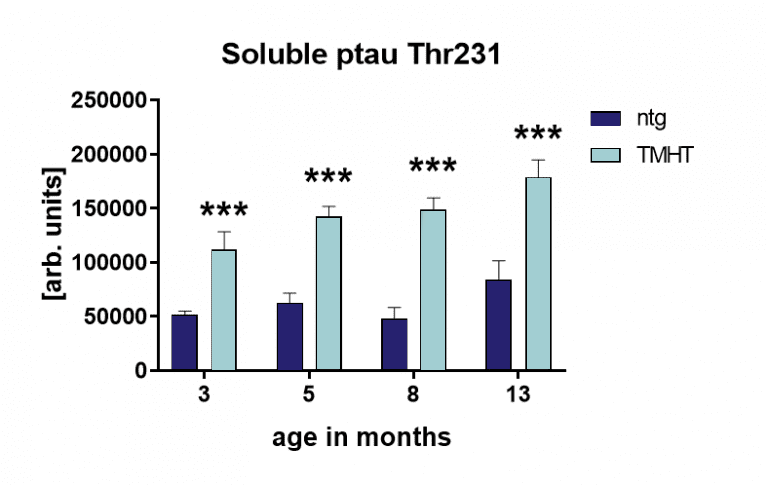The TMHT (Thy1 Mutated Human Tau) mouse was developed in-house and is exclusively available at Scantox. These animals represent a suitable model not only for Alzheimer’s disease but also for other tauopathies such as Frontotemporal Dementia and Parkinsonism linked to chromosome 17 (FTDP-17).
Various compounds of different classes were positively tested for their efficacy in the TMHT model such as the γ-secretase modulator CHF5074, sodium selenate, and grape seed polyphenol extract.
TMHT mice express the longest human tau isoform Tau441 (2N4R) with two mutations, V337M and R406W, under regulatory control of the neuron specific murine Thy1 promoter. Mice are bred on a C57BL/6 background. Overexpression of human tau leads to progressively increasing levels of soluble- and sarkosyl-insoluble tau in the brain. Furthermore, animals develop learning and memory deficits.
TMHT mice are cryo-preserved and will be recovered upon request.
The most important characteristics of TMHT mice are:
- Progressive increase of tau accumulation & hyperphosphorylation
- Progressive learning & memory impairment
Analysis of hippocampal tissues revealed age-associated increase and progression of hyperphosphorylated tau in TMHT mice as shown in Figure 1.

Figure 1: Phosphorylated tau at Thr231 in the hippocampus of 3-13 months old TMHT mice. Mean + SEM; n = 10. Two-way ANOVA with Bonferroni`s post hoc test. ***p<0.001.
Scantox offers a custom-tailored study design for TMHT mice, and we are flexible to accommodate your special interests. We are also happy to advise you and propose study designs. TMHT mice show relevant features of AD already at 3 months of age. TMHT mice are cryo-preserved and will be recovered upon request. Based on various options to study TMHT mice, your study will be customized according to your requirements. Furthermore, non-transgenic littermates are available as control animals needed for proper study design.
We are happy to evaluate the efficacy of your compound in the TMHT mouse model! The most common readouts are:
